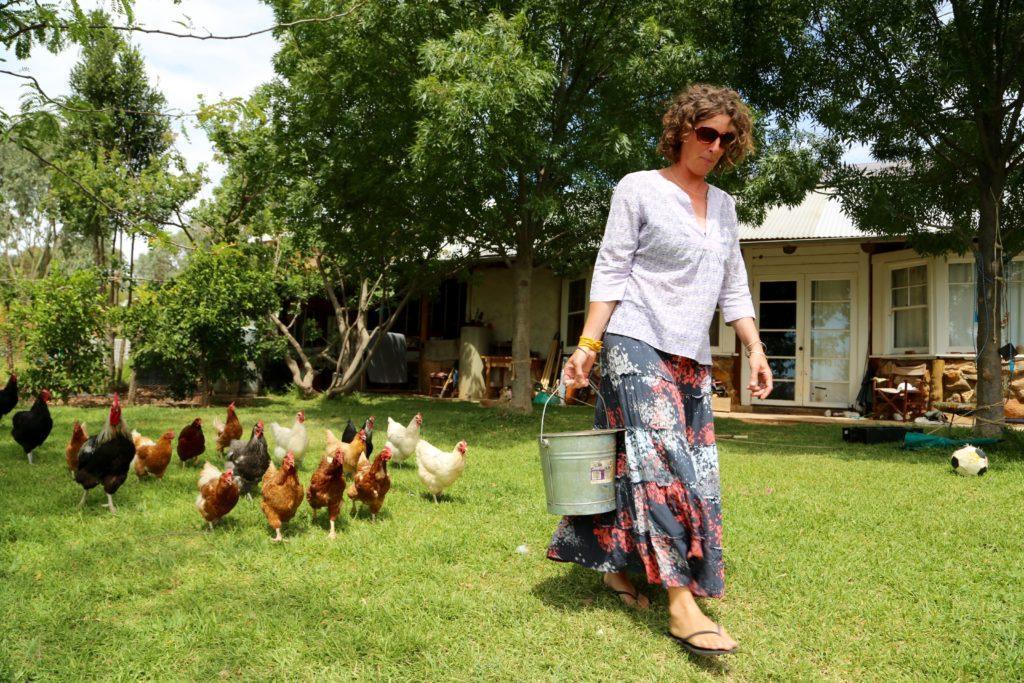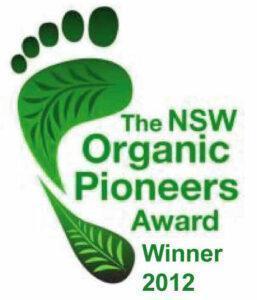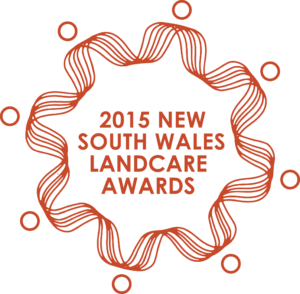Rosnay is an organic farm that was planned and created by the Statham family in 1995-1997, and which is now a part of Rivers Road Organic Farms, a unique model of cooperative organic farming using Community Title. Rosnay is certified organic to the Australian National Organic Standard by Southern Cross Certified.
We farm organically because it is possible. We are convinced that chemicals should not be used to produce food. We are not convinced that simply fermenting grapes or processing food magically removes chemical residues. In fact, we believe that fermentation and digestion are metabolic processes that can alter the toxicity of chemicals, in ways which are poorly understood.
Organic farming is more than “farming without chemicals”.
According to Australia’s organic gardening pioneer Peter Bennett, it is “a collection of skills, combined with experience and observation, which can maintain a stable life support system and produce vegetation of a high nutritional value upon which people can depend for a vigorous and healthy life-cycle”.
These are what we believe are the three most important principles of organic farming.
1. “Feed the soil, not the plant”. The foundation is the soil’s organic matter, humus and biological activity. Grazing animals transform pasture into manure, to return to the soil and become humus – essential for good soil structure and plant health. Plants need water for photosynthesis and respiration, but when water soluble chemical fertilisers are used the plant is forced to take up the fertilisers dissolved in the water, resulting in vigorous but soft, sappy growth, susceptible to pests and disease. However, when humus and the soil ecosystem are well developed organically, the vine can drink clean water, or it can absorb nutrients, as required. Deep rooted, organic vines and trees are lean but healthy and balanced, expressing the typical characters of the season, region and variety.
2. “Weeds are nature’s workers”. Rather than eradicate any plants which may “compete” with the crops and pastures, the organic approach is to see “weeds” as the builders of organic matter – the matted grass roots provide fibre, the tap roots extract deep nutrients which become available to the vines after the weeds have died and broken down. Many plants seen as “weeds” are actually “fixers” of atmospheric nitrogen as free fertiliser, or harbour beneficial insects.
Of course, noxious and declared weeds have to be eliminated by hand.
3. “Pests and diseases are the symptoms of other problems”. Fungal decomposition is part of the natural cycle in all ecosystems, and pests and disease can be seen a part of this. Rather than fighting disease with “systemic” fungicides which are absorbed into and translocated throughout the plant to kill invading diseases from the inside, the organic grower tries to avoid disease, (eg opening the canopy to air and light). Failing this, non-toxic, non-systemic products can be used, such as soap, milk, or sulfur, to help control the spread. Sanitation may help to break a disease cycle (eg burning infected canes in winter).
Similarly for insect pests – infestation may be a symptom of unhealthy plants and overuse of pesticides. By not spraying you actually encourage beneficial parasites and predators to keep the pests in natural balance.
 Biodynamic Practices
Biodynamic Practices
This is organic farming science, developed by Rudolph Steiner, a scientist who looked open mindedly beyond physical matter and into the life forces which influence soil, plant, animal and human health. He took ancient experience such as lunar planting rhythms and built a complete system of agriculture which is low input and self reliant. A healthy, balanced “farm organism” is developed by working with these subtle influences using various homeopathic, biological and herbal preparations, all of which may be produced on the farm using herbs, manures and minerals. Biodynamic methods help produce improved shelf life, flavour and cell structure.
Biodynamics is often derided and attacked by the other, hard end of science. However it is important to observe impartially. Before Rosnay began, Richard, Florence and Sam Statham visited organic and biodynamic farms in Australia, France and New Zealand to discover their methods. Without prejudice, we found that the best looking plants and animals, and the best tasting wines, tended to be from the farms which employed the Biodynamic method.
We have been using the biodynamic preparations at Rosnay since 1997.
Here is a paper on Biodynamics that was presented by Sam Statham to the Australian Society for Viticulture and Oenology in 2009.
Renewable Energy
Rosnay has been a bit old fashioned – making wine for the last 3 vintages using a generator on the back of a 1952 Fordson tractor! But in April 2021, after two years of planning, we disconnected the old tractor and plugged into our new solar powered, battery-supported, peer-to-peer-trade-ready, 3 phase power station!
The story began with a call from Aidan Moore, from Quantum NRG, who knew Rosnay from buying our products for over 10 years. Aidan wanted to help Rosnay, and two other farms whose products he loved, go solar, and acted as pro bono project manager in successfully proposing us in the NSW DPI On-farm energy pilot projects scheme. Our project included the installation of 87 x Sunport SP330M60 Panels (28kw, to add to our existing older 5kw array), 4 x RedFlow ZMCell Zinc Bromide Flow Btteries (total 40kw storage), 2 x Fronius inverters (SYMO 12.5KW 3PH), 3 x Victron MULTIPLUS-II 48/5000/70-50 inverters, with the batteries and inverters and controllers all neatly preconfigured and shipped in a 10′ shipping container, by 720 Electrical. We also plan to start “Peer to Peer” trading of surplus power generated with the other farms in our project, as part of the pilot project and using CarbonTRACK technology.
Other Useful Links
Pesticides in the Environment – New Sydney Uni Research
Construction of our new cellar door 2022


